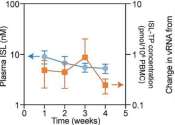The Journal of Controlled Release is a bimonthly peer-reviewed medical journal and the official journal of the Controlled Release Society. The journal contains papers detailing research involving the controlled release and delivery of drugs and other biologically active agents. Announcements and reports of future meetings pertaining to the activities of the Controlled Release Society are also included.
The journal is abstracted and indexed in BIOSIS Previews, CAB Abstracts, Chemical Abstracts, Current Contents/Life Sciences, EMBASE, MEDLINE, Science Citation Index, and Scopus.
- Publisher
- Elsevier
- History
- 1984-present
- Website
- http://www.elsevier.com/wps/find/journaldescription.cws_home/502690/description#description
- Impact factor
-
7.164
(2010)
Some content from Wikipedia,
licensed under CC BY-SA









